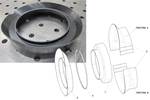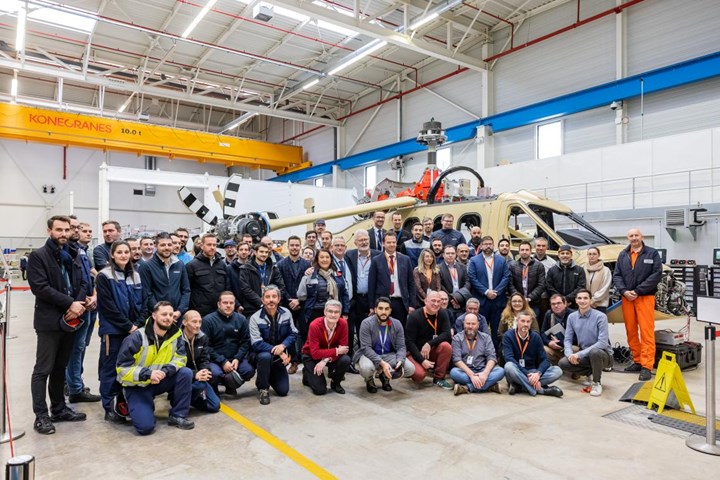RACER achieves “power on” test, prepares for 2023 maiden flights
Initial function checks were conducted at the Airbus Helicopter facility in Marignane, France, signaling the next step for the composite rotorcraft demonstrator and its highly collaborative teams.
In December 2022 the RACER (Rapid and Cost-Efficient Rotorcraft) team celebrated the success of its “power on” test for the helicopter demonstrator, firing up all systems to conduct initial functional checks. The major milestone was performed at the Airbus Helicopter facility in Marignane, France, with the participation of all the teams involved.
Developed by Airbus Helicopters under the Clean Sky 2 European research program, the RACER demonstrator is being developed as a high-speed helicopter aiming to achieve optimal speed, cost efficiency, sustainability and performance for missions like search and rescue operations and emergency medical transport; the aircraft also has scope to boost efficiency for intercity urban air mobility (UAM). CW has reported on its numerous composite developments over the years, namely its trialing of carbon fiber composite driveshafts, the forward fuselage featuring a one-piece composite canopy and, more recently, RACER’s complex-cored CFRP side shells.
“The RACER is a unique European concept, without equivalent in the world, being funded under the Horizon 2020 program,” Sébastien Dubois, head of programmes at Clean Aviation, says. “It completely meets the Clean Sky 2 objectives to reduce CO2 emissions and noise. This is a highly innovative compound helicopter, with more than 90 patented technologies developed, involving 40 companies across 13 EU countries. We congratulate all the participants who contributed to this important milestone on our route towards the maiden flight scheduled in the second part of 2023.”
Environmentally, RACER will:
- Slash emissions by 20% compared to a “medium class” helicopter.
- Reduce noise by 30%.
- Reduce fuel consumption at 180 knots (330 kilometers/hour).
The next step for the RACER team will be to conduct ground tests, including taxiing and hover tests. This will enable the team to collate further data on the aircraft’s performance to ensure that it is ready for flight testing in 2023.
“Today’s [December’s] power on test is an important day for the RACER demonstrator and for all the teams involved,” Tomasz Krysinski, head of research and innovation at Airbus Helicopters, adds. “The power on is a significant technical milestone which validates the readiness of the aircraft’s core avionic systems, software integration compatibility and electrical harnesses. But it is also a symbolic milestone, which illustrates progress and paves the way towards the first flight next year. I want to thank all our partners for their key contribution and ask them to keep the momentum so that we can power on towards this much-anticipated flight.”
Related Content
-
Composite sidewall cover expands options for fire-safe rail components
R&D project by CG Rail explores use of carbon fiber-reinforced thermoplastics and recycled manufacturing scrap to meet fire safety, weight and volume targets.
-
Improving carbon fiber SMC simulation for aerospace parts
Simutence and Engenuity demonstrate a virtual process chain enabling evaluation of process-induced fiber orientations for improved structural simulation and failure load prediction of a composite wing rib.
-
Optimizing a thermoplastic composite helicopter door hinge
9T Labs used Additive Fusion Technology to iterate CFRTP designs, fully exploit continuous fiber printing and outperform stainless steel and black metal designs in failure load and weight.
















